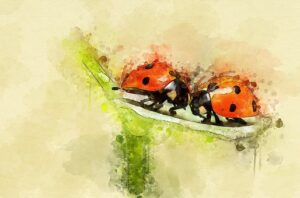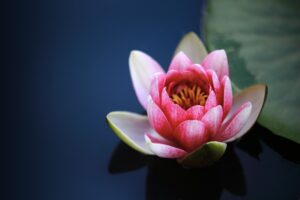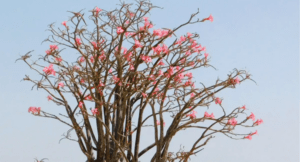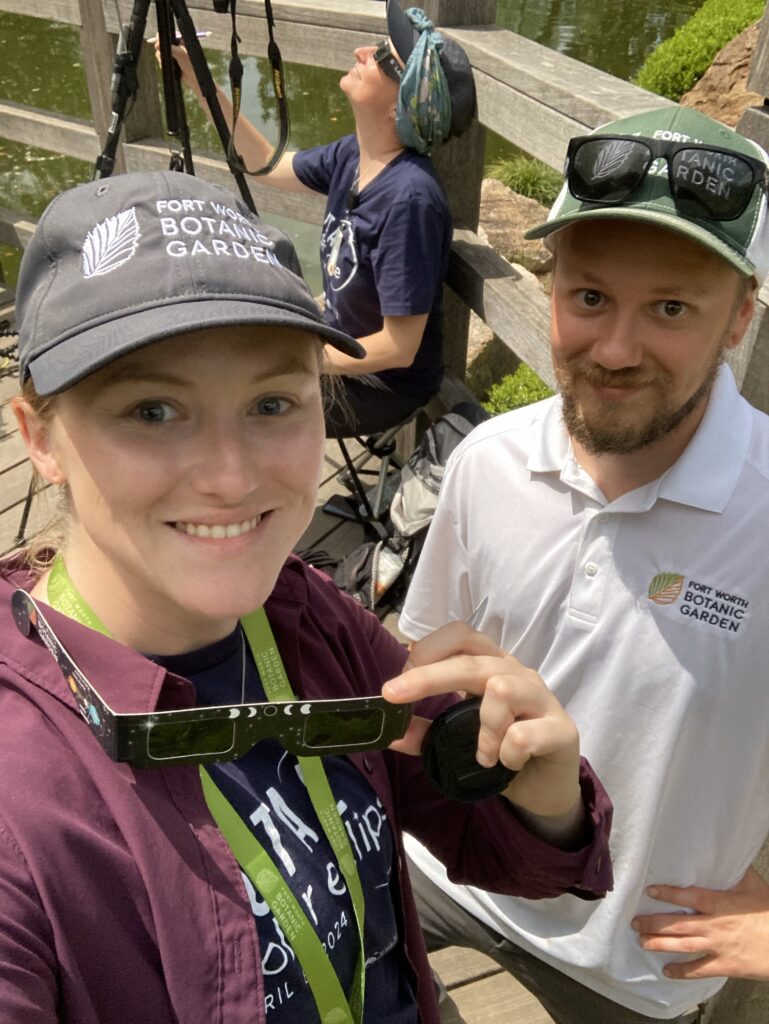
The April 8 total solar eclipse wasn’t only a once-in-a-lifetime experience–it was also a unique opportunity for Garden researchers and members of the community to get involved in community science initiatives.
Many guests at the Garden that day chose to participate in programs the Garden hosted. At the same time, Research staff undertook their own investigations. The data from some of these projects won’t be available for some time. However, we can report back on some of our findings.
GLOBEObserver: Falling temperatures offset by the heat retention of paved surfaces
Three teams of researchers took up positions around the Garden: one in the Japanese Garden, one at the North Vista and one at the Pollinator Pathway.
Each team collected data in the GLOBEObserver app, a year-round community science initiative that provides individuals with the opportunity to contribute data on climate information including cloud cover, mosquito activity and rainfall. Data collected through GLOBEObserver can help researchers to study the effects of eclipses on the atmospheric conditions and significantly enhance our understanding of how solar-powered processes are influenced by celestial events.
During total solar eclipse, a new app feature was introduced, allowing the public to submit temperature, cloud coverage and land coverage data from their observation locations. Researchers at the three Garden locations observed a significant drop in temperatures during the eclipse, as the research team describes:
The temperature fluctuations observed by each of the three teams differed significantly throughout the eclipse. The Pollinator Pathway team recorded the most substantial temperature change, with a difference of 18.9 degrees Fahrenheit. Prior to totality, the temperature stood at 92.9°F, dropping to 74°F during totality. Conversely, the Japanese Garden experienced the smallest temperature swing, with a variation of 8.7 degrees Fahrenheit. Temperatures started at 83.5°F before totality and reached 74.8°F during totality.
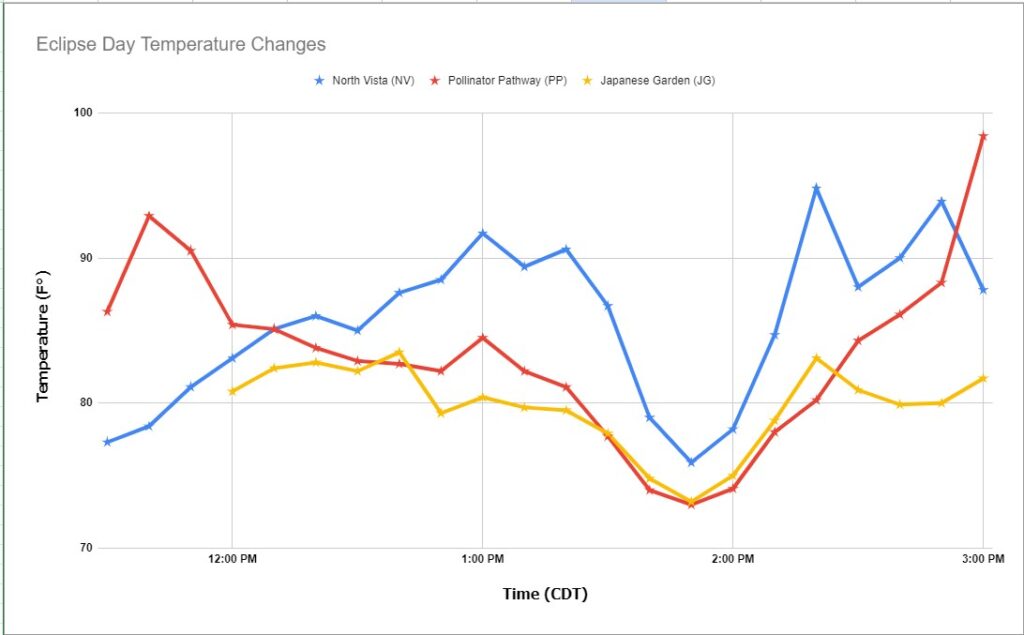
While temperatures dropped at all three locations, the Pollinator Pathway had grown hotter in the hours before the eclipse and retained more heat during the event. Likely this is the result of the location of the pathway, a green spot surrounded by parking lots. It’s well known that paved surfaces absorb heat during the day and only slowly release it overnight. This data doesn’t break new ground, but it is a reminder that paved surfaces have a measurable impact on temperatures, something important to keep in mind as our urban area grows.
You can now view our air temperature and cloud data along with other community scientists across the country collected for GLOBEObserver on eclipse day on these two maps: Air Temperature & Clouds
Goats in the Garden: Darkness is a good time to rest?
A few days before the eclipse, the garden introduced goats and sheep to the Native Texas Boardwalk as part of a separate project (more here). To monitor their behavior during the eclipse, a GoPro camera was set up, capturing their activities throughout the day. A timelapse video showing their movements will be released shortly.
However, observations by Garden staff revealed that most of the goats opted to rest or sleep during totality. It was dark, so why not?
Butterflies in the Garden: Confused insects?
The total solar eclipse coincided with Butterflies in the Garden, giving researchers a unique opportunity to observe their behavior during the eclipse.
Wildlife Observations
The Japanese Garden research team also noted some of the reactions of wildlife to the eclipse. Remember that the eclipse began at 12:22, totality extended between 1:40 and 1:42, and the eclipse ended at 3:01 pm.
1:22 pm – Cricket frogs called briefly
1:30 pm – Cricket frogs singing (sustained)
2:00 pm – Pond turtles had gone away from their sunning perches
2:08 pm – Turtles returning to sun
2:42 pm – Cricket frogs chimed a few times
Joyce Fethke-Block, Conservatory Collections Specialist, observed that during totality, the butterflies didn’t roost as they would at night but instead ceased flying and remained very still. Videos captured will soon be available. Perhaps the insects didn’t know what to make of the sudden mid-day darkness?
SunSketcher: Revealing the shape of the sun
The Garden’s three research teams also participated in a community science program from researchers out of Western Kentucky University, partnering with NASA. The SunSketcher program asked the public to help them capture photographs of the crescent Sun at times of the second and third contacts during the eclipse through their SunSketcher app.
Data collected through this app will help researchers learn more about the basic shape of the Sun and about internal flows that distort it. Understanding the Sun’s shape aids in studying its interior, and precise measurements of solar oblateness help calculate gravitational effects on inner planets like Mercury. It will take time for the information collected to be analyzed. For updates, check in on the SunSketcher website.
For more details on what the research team observed during the eclipse, you can view a presentation by Herbarium Collections Manager, Ashley Bales, who presented the overall findings for the eclipse at April’s Armchair Botanist Forum. The recording can be viewed below.
Thanks to all of the Garden guests who participated in the GLOBEObserver and SunSketcher community science initiatives. We hope it make your eclipse experience even more memorable.


